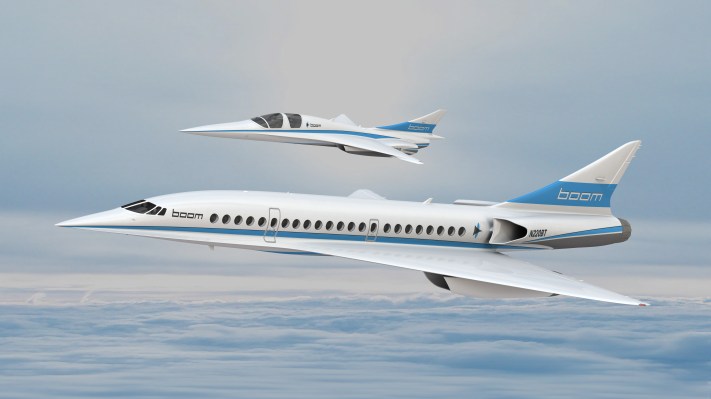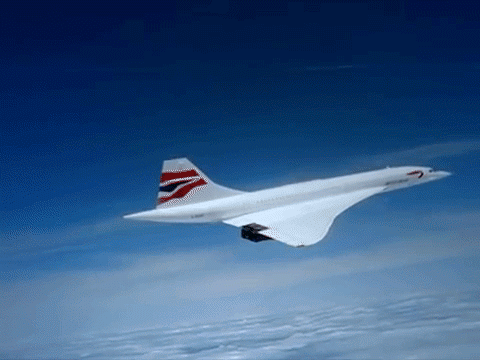There are few industries whose evolution includes dramatic steps backwards, but that’s exactly what happened in commercial aviation and its experiments in supersonic flight.
For 27 years, supersonic travel was a reality, creating a bridge between Europe and the U.S. that led to a bright future for commercial flight. And then, suddenly, that future disappeared. Blake Scholl is determined to bring that future back.
In an interview for Flux I chatted with Blake, the founder and CEO of Denver-based Boom, a supersonic jet company. We got into how the Concorde business model was flawed, why it takes an outsider to re-ignite innovation in the industry and how simulation software has greatly reduced the time and cost of plane design.
An excerpt of our conversation is published below.
AMLG: Today’s guest is Blake Scholl, founder of Boom — a supersonic civilian aircraft company based in Denver, Colorado. RRE is an investor and we’re a huge fan of Blake. He is a certified pilot and a repeat entrepreneur who previously founded the payments company Kima Labs, which was acquired by Groupon. He also built Amazon’s marketing automation stack. Welcome Blake. Let’s jump in — what is Boom exactly and where did the idea come from?
BS: The first 50 years of aviation— from the Wright brothers forward — we had incredible progress and safety and comfort and economics and speed. Then this weird thing happened in the 1960s and 70s where we stopped making progress in speed. The American Airlines special from New York to San Francisco back then was actually scheduled for an hour less than it is today. What technology have we had the capability and then actually gone backwards? We had Concorde — a Mach 2 passenger airplane — flew it for 30 years and never took it mainstream. Now it’s in museums.
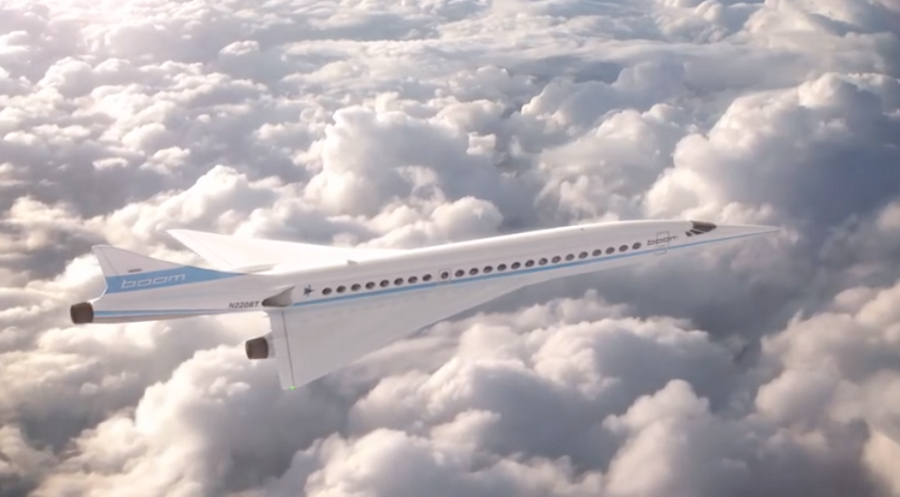
A visualization of the Boom plane
What we’re doing at Boom is trying to fix that problem, to bring back faster air travel but in a more mainstream, more affordable way than Concorde. We’re going to chip away at that problem until we have the fastest airplane that’s also the cheapest one to fly.
AMLG: We came up with road networks and steam engines, and humans got faster and faster and faster and then we had the Concorde and then we didn’t have it. It feels like we stopped with cars and jets. How does progress just halt like that, especially in an area like transport that’s so fundamental to the economy?
BS: You have to look at where innovation comes from. Everybody knows the first airplane came from bicycle entrepreneurs. What’s less well known is that the first practical airliner, the DC-3, and the first jetliner the de Havilland Comet — both came from founder-led companies. We haven’t had any founder-led companies in commercial aircraft since the last one was founded in 1921. The last founder retired from the industry in 1958. Since then we’ve had big companies basically optimizing the same concept.
What really happened that blocked supersonics? Well you have to look at where Concorde came from. Concorde was not an entrepreneurial project. It was a joint venture between two governments, the French and the British. Of course most joint ventures between the French and British have been wars.
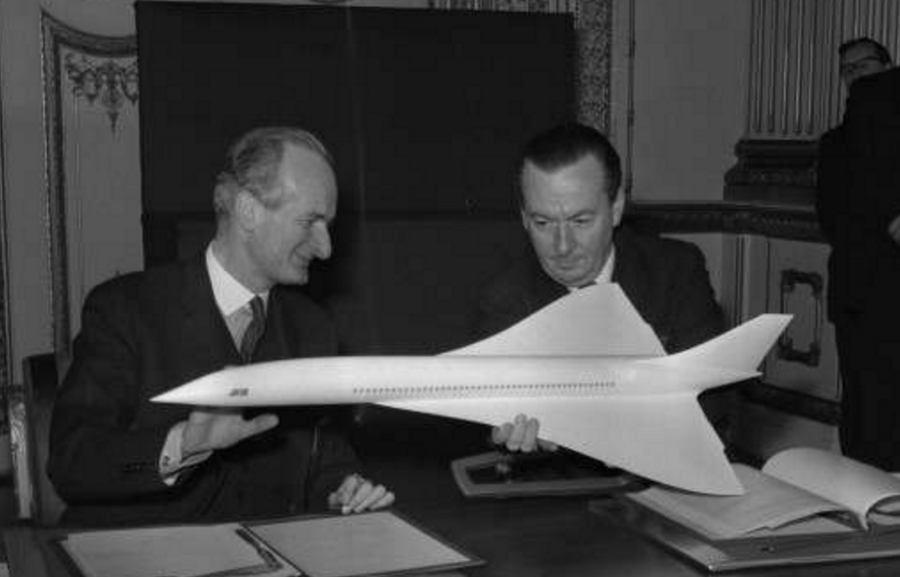
Geoffroy de Courcel the French Ambassador (left) and Julian Amery the British Minister of Aviation (right) look at a model of a supersonic airliner, on November 29, 1962 in London, where they signed an agreement for the joint development of a supersonic passenger plane. Both countries agreed to spend £75 — £85 million for production lines.
AMLG: Yes we’ve had our fair share of wars. As a Brit I can say that warring with the french is one of our favorite things to do.
BS: Right. So it’s remarkable Concorde ever flew. It wasn’t about, let’s usher in the supersonic age. It was about, let’s beat the Russians. It was a Cold War era glory project disconnected from economics. It was a glorious technical achievement but wasn’t aimed at being practical.
So the Europeans had Concorde, the Russians had this thing people call Concordski. And on this side of the pond there was what was supposed to be a Concorde killer that the U.S. government was championing. The Americans had to have a Mach 3 three hundred seat airplane. By the way that thing was going to be an economic catastrophe. In 1970 Congress pulled the subsidies that were going to Boeing to build that airplane. We got this unholy alliance between aerospace protectionist interests and ostensibly environmental concerns and we banned supersonic travel in the US. Literally banned it. We put in place a speed limit.
AMLG: Wait why did they pull the subsidies? Due to cost?
BS: There’s a lot of ambiguity in the U.S. about whether the government should have been paying 75% of the development cost of a private airplane. That was the biggest reason that Congress pulled it. Besides it was over budget, behind schedule, all the normal things. But it was after that that we banned supersonic travel, when Concorde looked like a threat. That messed up what would have been the normal development path, the normal go-to-market path for supersonic airplanes.
Think about everything from cell phones to computers to electric cars. The way they come to market is they start at a relatively high price point that a small number of people can afford. Then as the technology gets figured out and you get economies of scale and the cost comes down, eventually every kid has a cell phone. But you have to start somewhere. The natural place for supersonic aircraft to have started would be the supersonic private jet. A small number of people whose time is super valuable who can afford something expensive. Those people fly mostly over land. If you can’t fly supersonic over land, well that destroyed the market. It destroyed what would have been the normal evolution of supersonic. Had that not happened I think we’d both be flying on supersonic jumbos today.
AMLG: But you’re not starting with the high-end private jet. You’re starting with commercial and want to make this accessible to everyone?
BS: That’s right. Basically because of the supersonic over land ban, you have to skip a step in your market development. Until that’s reversed I don’t think there’s a market for the supersonic private jet. But you can start with the thing that’s the next level of development, which is a small supersonic aircraft for commercial airliner use. The reason after 50 years why this is finally possible is enough development has happened in aerospace, around aerodynamics and materials and engines. You can pick up those pieces of technology and use them to create a small supersonic aircraft and skip the private jet part. In airlines you focus on routes that are mostly over water like New York to London, San Francisco to Tokyo, Seattle to Shanghai.
AMLG: So the plan is 45 people per plane, one on each side of the aisle — which sounds appealing, none of that battle for the arm rest — and you’re aiming for much lower fuel consumption per passenger right, something like 30% greater efficiency than the Concorde? How do the economics and profitability compare?
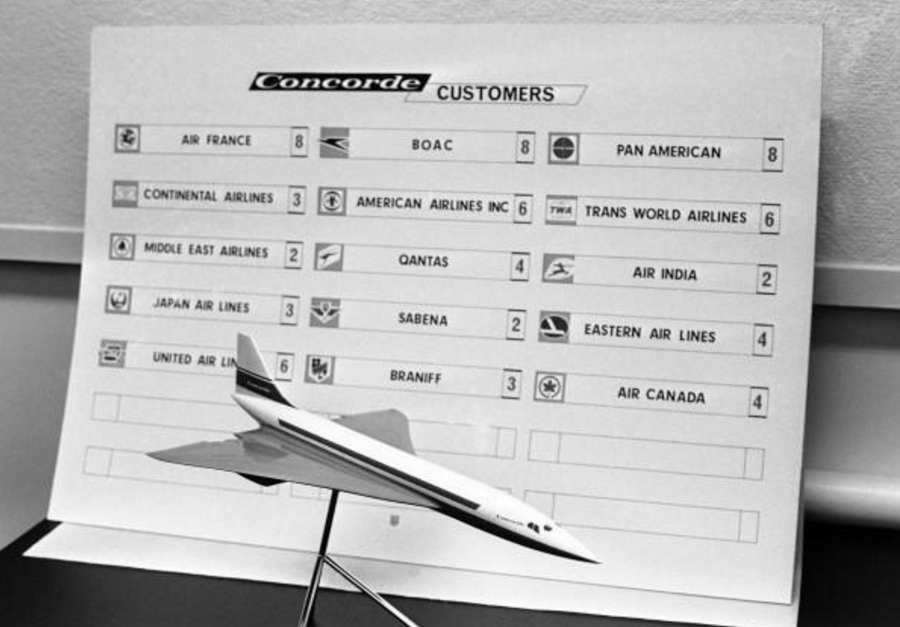
A British Aircraft Corporation sales chart, Jan. 18, 1967, showing 69 Concordes on order.
BS: Concorde was extremely expensive to operate for two reasons. One — it was a gas guzzler. Two — it had no economies of scale. The reason it had no economies of scale was that ticket prices were really high. You had to charge $20,000 per round-trip ticket to make any money and you had to put 100 seats on the airplane. You can’t fill 100 seats at $20,000 a pop. It doesn’t work.
If you want to make this work what you have to do is improve the fuel economy so you get the ticket prices down. Taking those one at a time. On the fuel economy piece if you run the numbers — and all the data for this is on Wikipedia — if you beat Concorde by 30% on gas mileage you’re at parity with subsonic business class. You’re not yet at parity with economy, and we need to get there eventually, but you can do it for business class.
So with this Mach 2.2, 45 seat airplane with business class pricing then the story for airlines is hey, if you can fly a Boeing or Airbus on a route and fill the seats and make money, you can fly the Boom jet on the same route and fill the seats and make money. Except you can be differentiated because the flights get there in half the time.
AMLG: It sounds like this is going to take a lot of money. I’ve seen you say that we can build the entire company and get to breakeven for less money than Uber raises in a round, which is funny for a lot of reasons — how much will this really cost?
BS: It’s definitely a capital intensive business. We’re working both on demonstrating the technology as well as demonstrating the market demand and that we have product/market fit with what airlines want.
We’re about a year away from flying our first airplane the XB-1 supersonic demonstrator which is a smaller version of the same thing that shows all the tech works. It will probably require the better part of a billion to get the first passenger flights happening. But at the same time, the market here is a thousand plus airplanes and they are $200 million dollars each. So it’s a pretty good prize and a pretty big ROI even though the capital requirements are large.
AMLG: So $200 million per plane is pretty good, and you’ve got flagship deals with Branson at Virgin Atlantic, who’ve said they’d like to buy at least 10 jets, as well as a bunch of other carriers with LOIs. Obviously they want your jets, so why haven’t they done it themselves? Boeing for instance had proposals for supersonic, why didn’t they build it?
BS: Put yourself in the shoes of the Boeing CEO for a moment. Boeing does one new clean sheet commercial aircraft about every 15 years. So they have to be choosy about what they take on. They have to go after the biggest market opportunity they see. Boeing is widely known to be working on a 797, which is a replacement for the 757, and they think the market size is 4,000 to 5,000 airplanes.
It’s a straightforward replacement of an existing product, for an existing market. Imagine the CEO of Boeing saying “you know let’s not do the 797 let’s do this supersonic thing, we’ll sell a thousand of them, it’ll be great.” The board’s probably going to replace you. This is one of these things that looks great from the perspective of a startup. Moreover, if the small supersonic aircraft pulls passengers off the Dreamliners then they’re going to sell less Dreamliners or have to reduce the price of the Dreamliner which doesn’t sound good. Why would you cannibalize your own business.
AMLG: So it’s a classic innovation dilemma for the legacy corporations. As you say maybe this is why it has to be a founder-driven thing. I want to go back to how you got into this. You’re a repeat internet entrepreneur. How did you get into airplanes, where did this interest come from?
BS: I’ve loved airplanes since I was a kid and I’ve been flying for fun since I was in college. I was living in a world where all other parts of technology are getting better and better, but air travel’s horrible and getting worse. It made no sense. I had this on my bucket list for the better part of a decade, that maybe some day I’d work on it. I created a Google Alert for “supersonic jet” in 2007. I wanted to be the first to know when someone cracked the nut. It was like crickets. Maybe a business jet I couldn’t afford to fly? Crickets. Sci-fi concepts that are never going to work? Crickets.
AMLG: With this one in particular it feels like there’d been some stigma, that it had been left on the drawing board. I do have to ask though, I mean clearly you’re passionate about aerospace, but usually the founder picks a market where they have a ton of expertise or experience — you didn’t have the engineering background to build planes from scratch. How did you feel qualified to start such an ambitious, technical company?
BS: You can learn a lot when you’re motivated. Most people underestimate their ability to go acquire new knowledge. In the first year of working on this it was basically education and recruiting. I read textbooks. I took an airplane design class. I spent a lot of time talking to the best people I could find in the industry and asking them questions and getting them to teach me things and to tell me when I was wrong about stuff. This doesn’t make me an aerospace engineer and I’m not going to design the airplane personally, but I know enough to be dangerous and I know enough to judge talent. I think that’s really important.
AMLG: So in that year you studied enough and talked to enough experts to get over a threshold and come to the conclusion that yes, this is a viable problem, this can be solved?
BS: That’s right. There was a pivotal moment where I’d built basically a spreadsheet model of the airplane. Airplane performance really comes down to four key variables: aerodynamic efficiency, structural efficiency, propulsive efficiency and speed of the airplane. If you have estimates of those things you can relatively straightforwardly predict what the fuel economy is going to be. I had some assumptions there and wasn’t sure how valid they were.
I built the model, took it to a professor at Stanford and said, hey can you look at this and check my math and tell me whether this is reasonable? This guy had done a bunch of research on supersonic airplanes and his feedback was, if you’re going to do this you should really try harder because these seem conservative. At that point I figured either I had no courage or had to find a way to start the company and make it happen.
AMLG: So that was the moment where you realized OK I’m doing this. You’ve said that all the information you needed was on Wikipedia. It reminds me of Elon, of what he did with rockets. He ordered a bunch of manuals off the Internet, read everything, then started to build SpaceX. It turns out you can do that.
BS: It turns out you can do that.
AMLG: Has SpaceX been an inspiration for you, has it paved the way for investors to be more open-minded to this?
BS: I do not think this company would exist if it weren’t for SpaceX, for multiple reasons. One is just personal inspiration. That Elon was able to go off and do something that a lot of people thought was technically impossible, and practically impossible to do as a startup. He’s gone off to accomplish things nobody else can do with less money and greater impact. That’s so cool. It’s an existence proof that’s personally inspiring. Also for investors, it’s like OK things of this scale aren’t impossible.
AMLG: I want to get back into the technology for a second. You mentioned there have been advances in materials science, engines, aerodynamics. What’s changed that makes this more feasible than before? I know that you can for instance, run design tests in simulations at a far cheaper cost?
BS: If you take Boeing’s latest airplane and put it next to their airplane from the 1960s, they look pretty darn similar and their capabilities are pretty darn similar. But they’ve actually completely swapped out the technology stack. We’ve got carbon fiber composites, better aerodynamics and dramatically improved engines. Those are the big three things that make this technically possible today — aerodynamics, materials and propulsion.
From the aerodynamics perspective you used to have to go to wind tunnels to design airplanes. That sucks because every wind tunnel iteration takes six months and costs millions. You’ve got to have an enormous budget and a huge team and a lot of time and you can’t test many ideas. Today you can do the equivalent of six months of wind tunnel testing in half an hour with a simulation running in the cloud. It’s almost like cheating, you can come up with better aerodynamic design, you can test a lot more ideas. If you look at our airplane carefully you’ll notice there’s not a straight line anywhere on it. It looks a bit like Concorde if you squint but the fuselage is differently shaped, the wings are differently shaped.
AMLG: Longer and thinner?
BS: Yes a bit longer and thinner. The key thing is the shaping. It’s not just a tube with wings coming out. That makes a huge difference. It’s not that Concorde’s designers were stupid, they just couldn’t do as many iterations as we can.
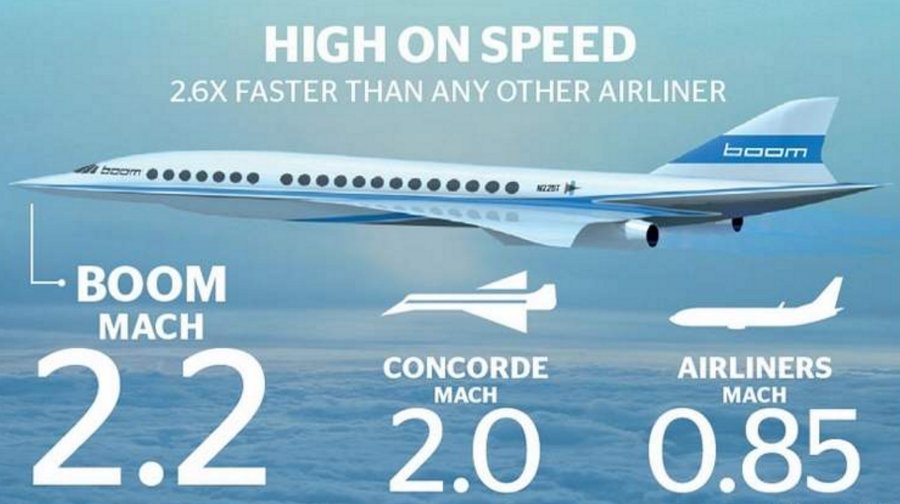
AMLG: With the aerodynamics — obviously the Concorde used afterburners to get up to speed, to get to Mach 2. You’re not going to be doing that. That’s the really inefficient part?
BS: That was the only way you could get to sufficient thrust with 1950s technology. Today we have something called turbofan engines which are quieter and more efficient and can generate enough thrust to get you going fast. When the Concorde flipped on the afterburners their fuel consumption went up 78% and they got just 17% more thrust. That’s a bad way to get extra thrust. It’s 2017 we don’t need afterburners to go fast anymore.
AMLG: So the turbofan helps solve some of that?
BS: Yes the turbofan gets you enough thrust for high speed while also being significantly quieter. Concorde was a pretty loud airplane, those afterburners were ripping.
AMLG: That’s kind of the elephant in the room. I’ve got to ask, why did you name the company Boom? Isn’t it a bit of a jinx, aren’t you fighting that whole conception of a noisy plane?
BS: Sonic booms are way overblown. And we’re owning it. That’s part of why we named it Boom. It’s like boom and you’re there. It’s fun to say. I love the name.
To talk more about the noise issue. There are two potential noise issues with supersonic airplanes. One is around the airport. The Concorde flying on an afterburner, that was just loud around airport communities. Turbofans basically solve that problem. This is going to be no louder than other airplanes that are flying today. The second piece is the sonic boom. A sonic boom is a noise that you hear any time a supersonic aircraft flies over. It’s not just one time, it happens on fly over.
AMLG: You’ve said yours is going to be 100 times quieter than the Concorde, that’s significant. What will that sound like?
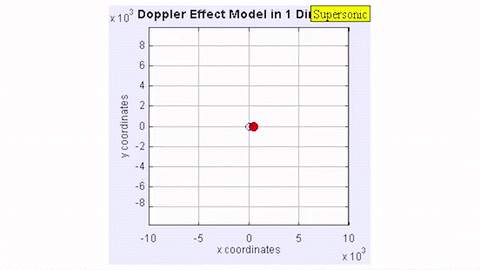
A supersonic boom is the sound created by an object traveling through the air faster than the sound waves it creates.
BS: It will be more like a thump than a boom. There’s a story in the news a couple of weeks ago about how the military had scrambled some F-16s that had gone supersonic at a few thousand feet, and man that rattled windows and there was a loud crack. At that altitude at that speed with that airplane design it sure is loud. But when you’re up at 60,000 feet with an airplane that’s designed to attenuate the boom it can be a lot more benign. You’re in New York City. There’s all kinds of stuff that’s noise in your background — ambulances going by, fire trucks, trains and construction noise. The sonic thump is quieter than many of those things.
AMLG: But the same restrictions are in place. Do you think this is enough to get the rules changed? I know you’ve got lobbyists, you’ve got a head of policy, you’re spending a bunch of time in D.C. and trying to get productive conversations going. How do you get movement in Washington?
BS: There are two ways it could go. One is, we manage to persuade people quickly that these rules should be fixed. I would call that our Plan A. If that happens you’re going to suddenly see a lot more investment in this space, because if you can fly supersonic over land the market size quadruples.
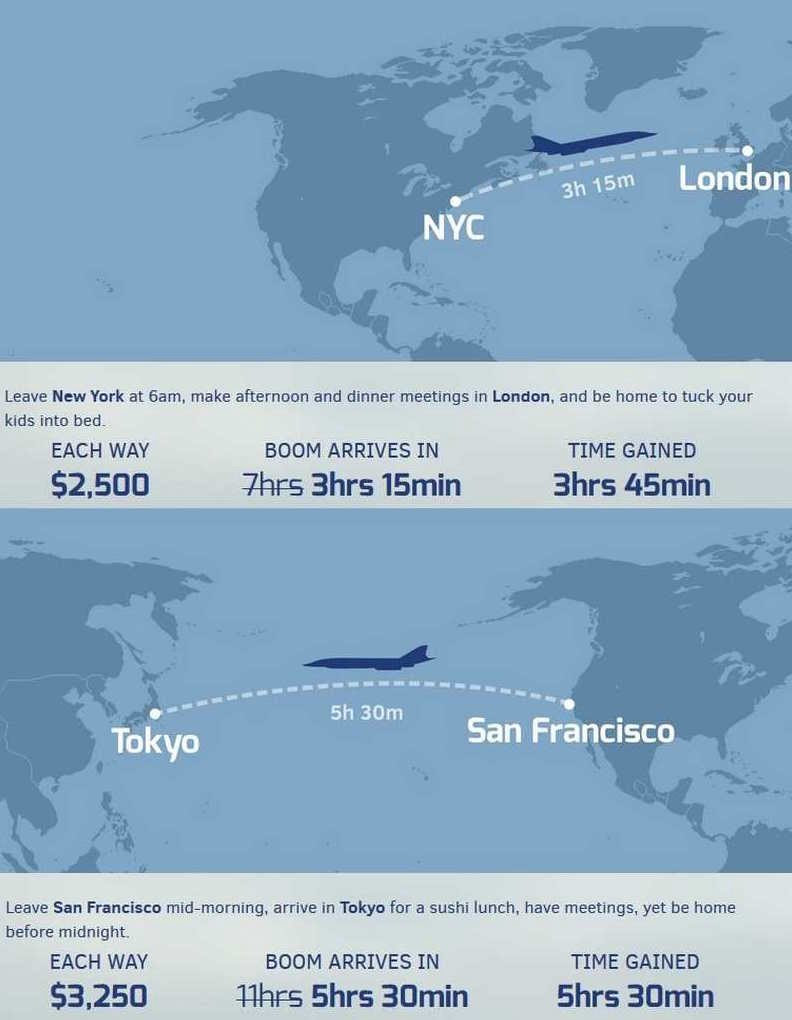
But sometimes rule changes happen slowly. There have been efforts to change this for 20 years that haven’t gone anywhere. So plan B is, we bring our product to market we fly supersonic over water, we fly subsonic over land. Then you’re living in a world where San Francisco to Tokyo is faster than San Francisco to D.C. A lot of people will be scratching their heads and asking, what? Why do I have to spend four more hours on the back of this crappy airplane? Let me listen to that sonic boom thing. Wait a minute that? That’s the reason I have to suffer? Let’s fix that.
AMLG: Did you ever go on the Concorde?
BS: Only in museums. It shut down when I was in my early 20s and I didn’t have twenty grand to drop on a joyride.
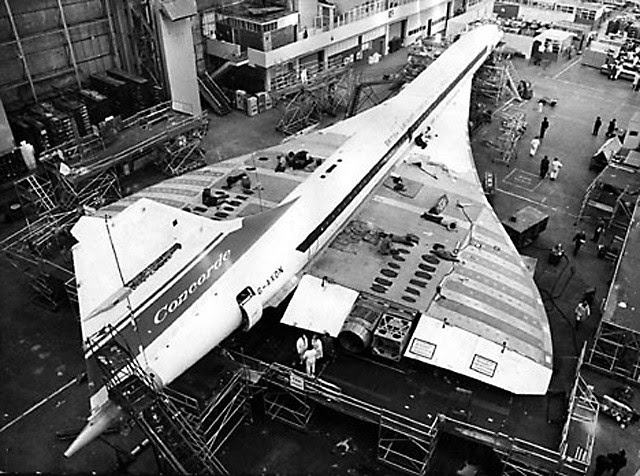
The Concorde in production
AMLG: I never made it either. Although my dad did. In his twenties he was fired from his job, he used his last paycheck to go on the Concorde, where he actually met his future investor who invested in his firm. A fortuitous tale before the Concorde shut down.
BS: That’s awesome. One of our board members Sam Altman who’s president of Y Combinator was telling me that he got to go on Concorde when he was seven and it was a formative experience for him. I wish I’d had that. We’re going to make it possible for our kids.
AMLG: You’re going to change everything. Only 5 percent of the world’s population has ever been on an airplane. Did you know that? Seems very low.
BS: It’s very low. We’ve got to fix that too. That’s where the future of supersonic gets interesting. Today with the first airplane we’re building we’re going to make this accessible for basically business class prices. So if you can afford to buy a business class international today, then you can afford to get there in half the time.
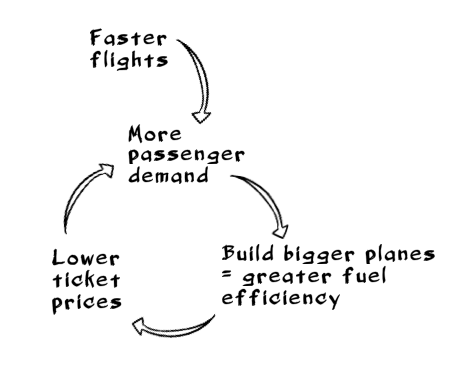
That’s just the starting point. There’s an interesting flywheel that happens. As we were saying about Hawaii, the faster the flights the more people go more often. When more people are going more often, the ideal size of the airplane increases. So instead of being 55 seats maybe it’s 100 or 150.
When you build a bigger airplane you can make it way more fuel-efficient which means that ticket prices can come down and more people can afford to fly more often which means the airplane can get bigger which means it can be more efficient. That virtuous cycle starts spinning. And as you grow the market you can afford to invest more in your technology. There’s a whole roadmap for supersonic efficiency which basically no one is working on today. But when the market exists, we start to get investment.
There’s also a tipping point at which the fastest flight actually becomes the cheapest one. Because the faster you go, the more flights you can do with the same airplane, with the same crew. I call it the speed dividend — when things are faster, you get savings. That’s going to push us to a point where faster airplanes actually have an economic advantage over slow ones.
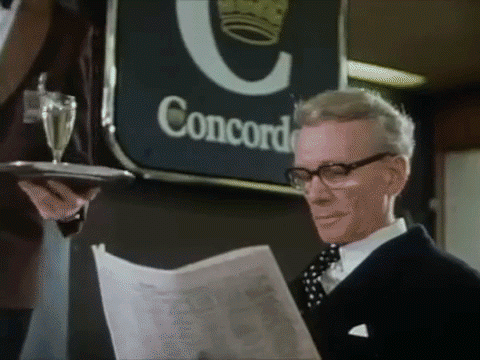
British Airways Concorde footage
AMLG: But you’re not planning to do the full stack and run a Boom airlines?
BS: No. One hard problem at the time. What we’re doing is pretty darn ambitious. Let’s do an airline and let’s build an airplane company and a supersonic airplane company on top of that? It’s too much for a startup.
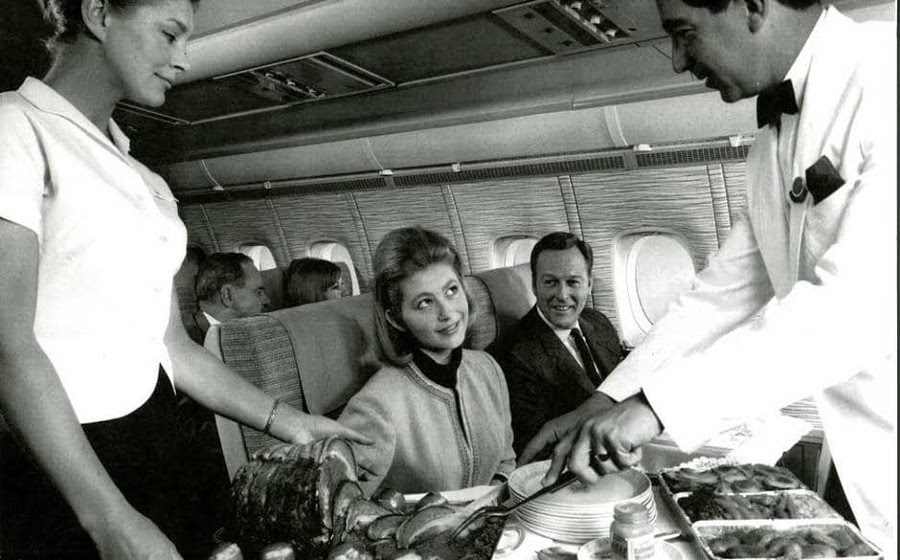
The menu on British Airways’ first commercial flight included 1969 Dom Perignon, caviar and lobster canapés, grilled fillet steak, palm heart salad with Roquefort dressing and fresh strawberries with double cream. Customers were also offered Havana cigars. [Source]
AMLG: It’s also a very different concept, bringing speed to the masses. On the British Airways Concorde flight they served Dom Perignon, caviar and lobster — that’s my conception of the Concorde. This is different, this is really making it accessible.
BS: This is not about luxury or prestige. It’s about something everyone should have.
AMLG: OK segue to a totally unrelated question. I love movies so I have to ask — favorite airplane movie? Air Force One, Top Gun, Snakes on a Plane?
BS: You have to love Top Gun. I’m reminded of a line from it: “You won’t be happy unless you’re going Mach 2 with your hair on fire.” I find that inspiring.
